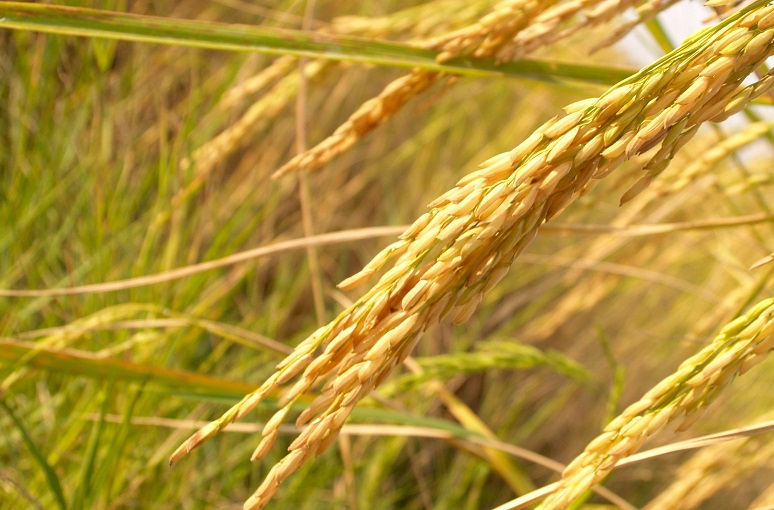Rice Harvesting, Yield per Hectare and Storage

This post is also available in:
This post is also available in:
![]() Español (Spanish)
Español (Spanish) ![]() Français (French)
Français (French) ![]() Deutsch (German)
Deutsch (German) ![]() Nederlands (Dutch)
Nederlands (Dutch) ![]() हिन्दी (Hindi)
हिन्दी (Hindi) ![]() العربية (Arabic)
العربية (Arabic) ![]() Türkçe (Turkish)
Türkçe (Turkish) ![]() 简体中文 (Chinese (Simplified))
简体中文 (Chinese (Simplified)) ![]() Русский (Russian)
Русский (Russian) ![]() Italiano (Italian)
Italiano (Italian) ![]() Ελληνικά (Greek)
Ελληνικά (Greek) ![]() Português (Portuguese (Brazil))
Português (Portuguese (Brazil)) ![]() Indonesia (Indonesian)
Indonesia (Indonesian)
Harvesting on time; Why does this matter?
The biological cycle of rice (days from seedling to harvest) ranges from 95 days (very early varieties) to almost 250 days (very late varieties). Medium maturing varieties can be harvested 120-150 days after sowing. We can understand when the grains are ready to be harvested when they start to have a yellow color and become hard.
It is very important to harvest rice crops on time in order to maximize grain quality and yields. If we harvest too early, collected grains will be immature and as a result they will have poor milling recovery and they will break easily. On the other hand, when crops are harvested late, grain may fall from the panicle and lead to heavy losses. As a general rule, the harvest may begin only when grains are ripened in a percentage of 80-85% or have a golden yellow color.
Harvesting can take place manually or mechanically. In manual harvesting, workers collect rice plants from the rice paddies using sharp knives. Then, they carefully clean them and separate the damaged ones. Mechanical harvesting can be done by using machines that combine all the operations, such as cutting, threshing and cleaning.
Post-Harvest Handling
After harvesting, rice seeds normally need to be stored in silos and dry artificially, so that the seed moisture content can be reduced to 13-14%.
Rice Drying Process
Drying is an important procedure to reduce grain moisture. After the harvest, grains normally contain about 25% moisture. If we let them without doing anything, this may lead to grain discoloration and potential attacks from pests. So, before storing grains, in most cases, farmers dry the grains out. There are two ways of drying. The traditional and mechanical methods. In most cases, it is essential to dry the grains within 24 hours after harvesting.
Traditional Drying
Because of its low and almost zero cost, traditional drying is preferred and practiced in plenty of countries. We can dry rice grain by exposing it to sunlight. Workers can spread the grains to rugs or sidewalks until they dry.
Mechanical Drying
This method is based on removing water from the grains with heated air. This can be done with different types of dryers.
The average yield of rice (seeds) per hectare is 3 – 6 tons. In some countries like Australia and in Egypt, the yield can increase to an amazing 10 – 12 tons or more per hectare. (1 ton = 1000 kg = 2200 lbs. and 1 hectare = 2,47 acres = 10.000 square meters). Of course, such high yields can be accomplished by experienced farmers after several years of practice.
How to grow Rice – Rice Complete Growing Guide from Seeding to Harvest
Rice Field and Soil Preparation
Rice Planting, Seeding Requirements – Seed Rate of Rice
Nutrient Management in Rice Crops – Rice Plant Fertilization
Rice Harvesting, Yield per Hectare and Storage
Do you have experience in growing rice? Please share your experience, methods and practices in the comments below. All the content you add will be soon reviewed by our agronomists. Once approved, it will be added to Wikifarmer.com and it will influence positively thousands of new and experienced farmers across the world.








































































